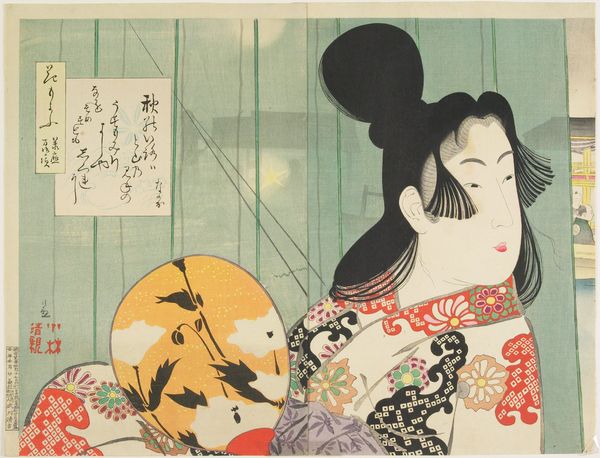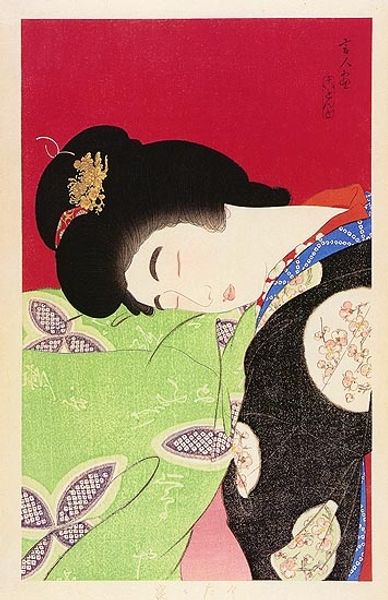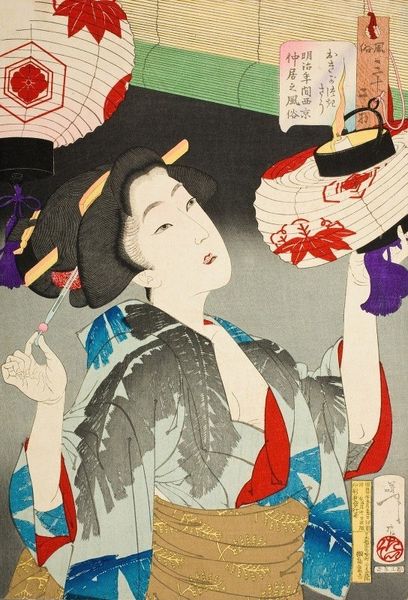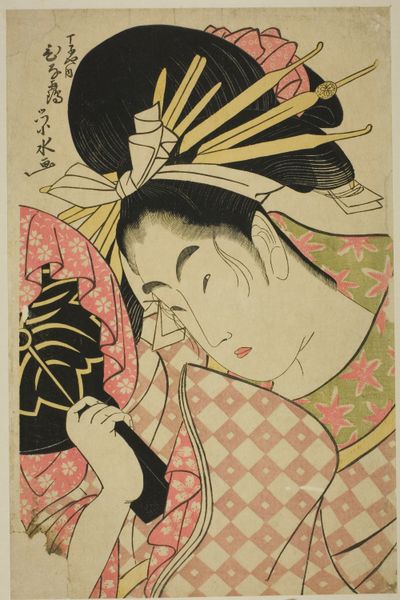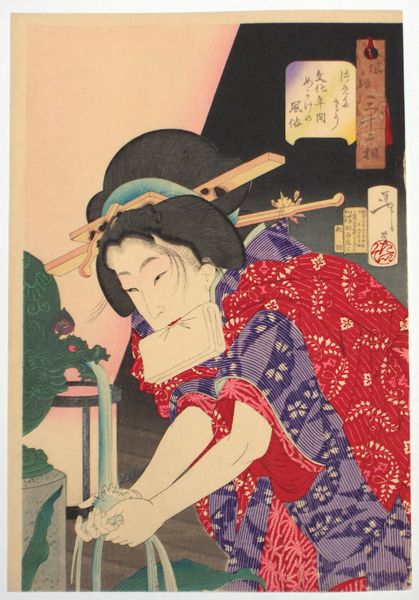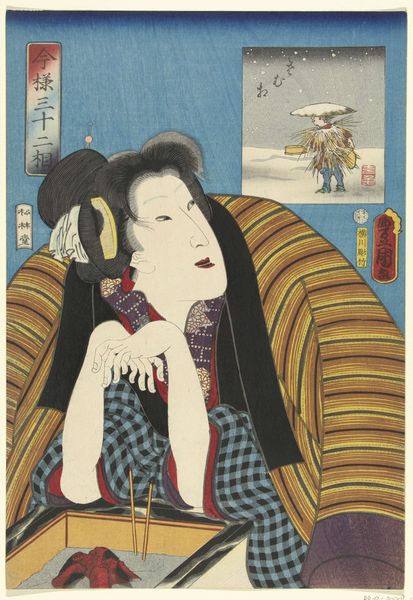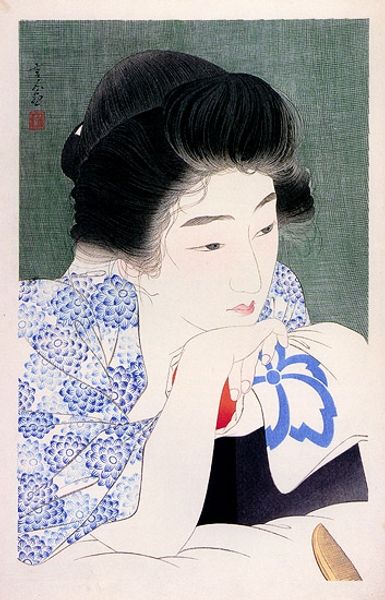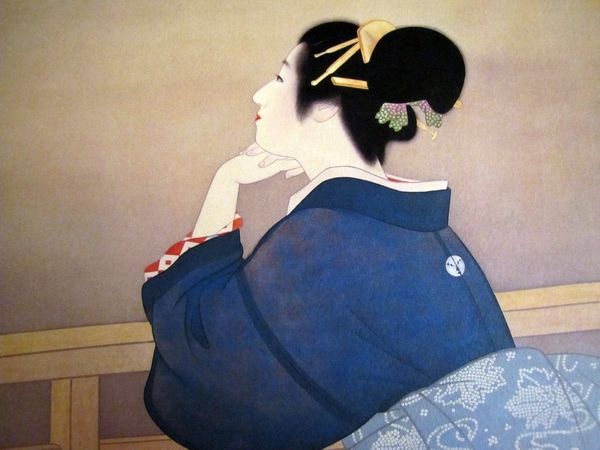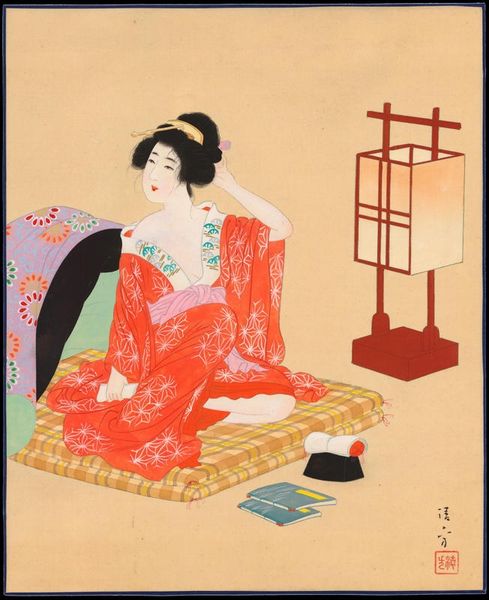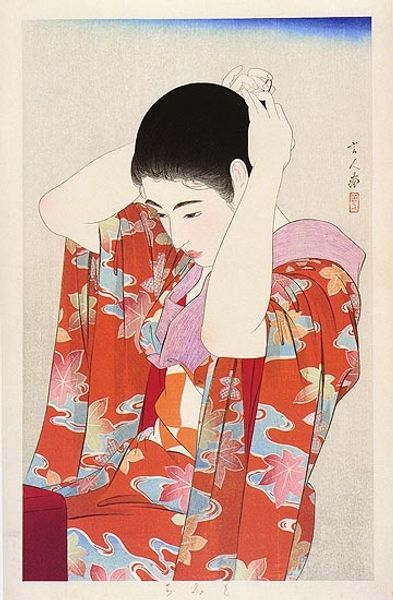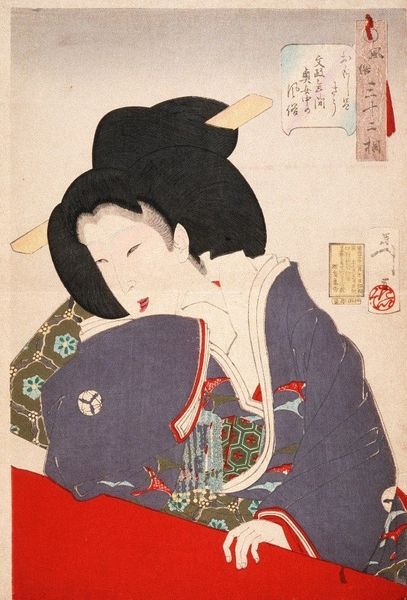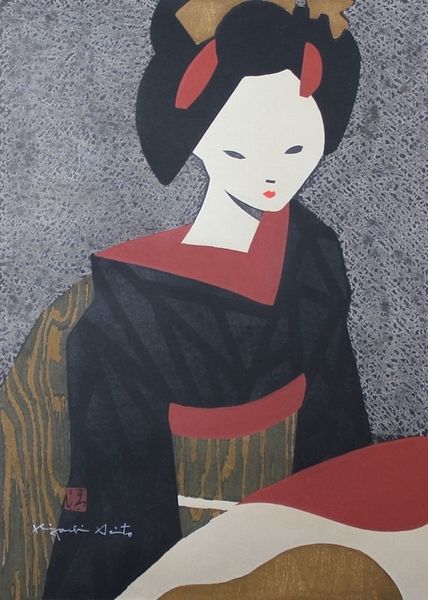
Copyright: Public domain
Editor: So this is "Looking Sleepy - The appearance of a courtesan of the Meiji era," a woodblock print and ink work from 1888 by Tsukioka Yoshitoshi. The woman seems so still, almost melancholic. What do you make of this image, especially within its historical context? Curator: It's crucial to remember that ukiyo-e prints weren’t simply aesthetic objects. They were deeply embedded in the socio-political landscape. This image, from the Meiji era, reflects the shifting power structures of the time. The courtesan, a figure of pleasure and entertainment, is depicted in a moment of repose. Consider: How does portraying her this way impact her social perception? Editor: That's a great point. Is the “sleepiness” perhaps a metaphor? Is it about the shifting social dynamics affecting the geisha’s role in society? Curator: Exactly! This print, through the depiction of the courtesan, prompts us to think about the role of women in a rapidly modernizing Japan, and the power structures inherent in representing them. It is a political commentary. The medium too plays a role: the circulation of prints made these critiques widely accessible. Do you think that contributed to shifts in public sentiment? Editor: Absolutely, mass-produced images can certainly shape public perception and dialogue. I hadn't considered the accessibility factor so closely! Curator: Yes, Yoshitoshi made us see more than what is on the surface. We have to reflect on the broader socio-cultural implication of this figure in Japanese society. Editor: I am seeing it now! This artwork made me reflect on the impact of art as an indicator of the artist’s personal interpretation of social environments. Curator: Exactly! Never forget that art exists in a broader system.
Comments
No comments
Be the first to comment and join the conversation on the ultimate creative platform.
